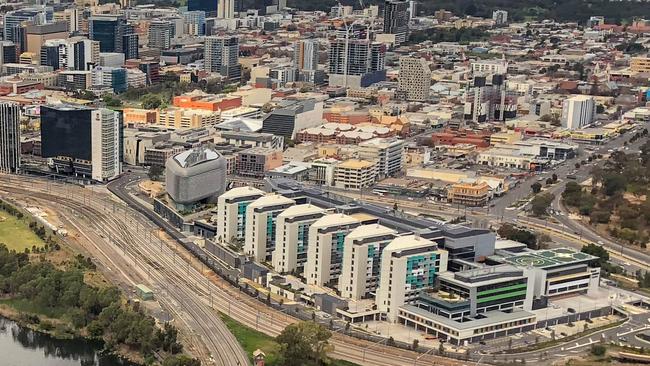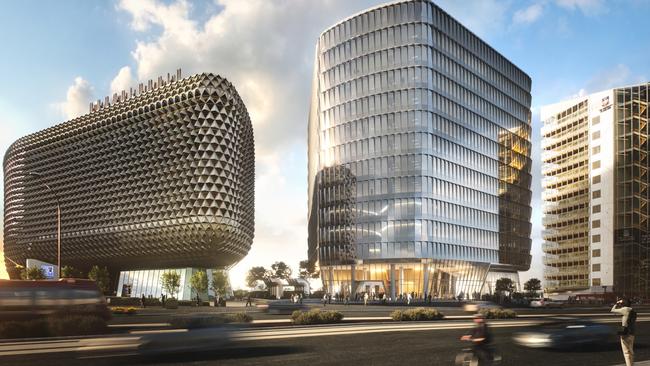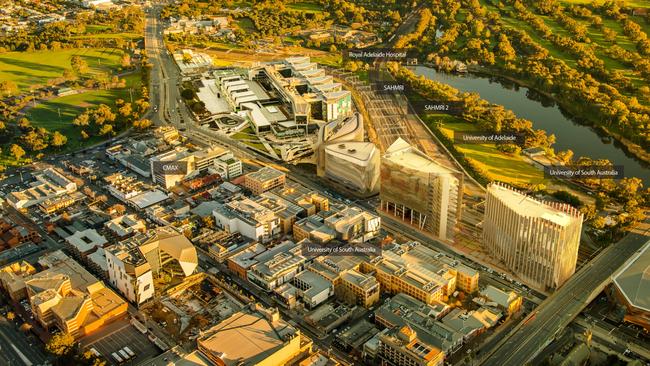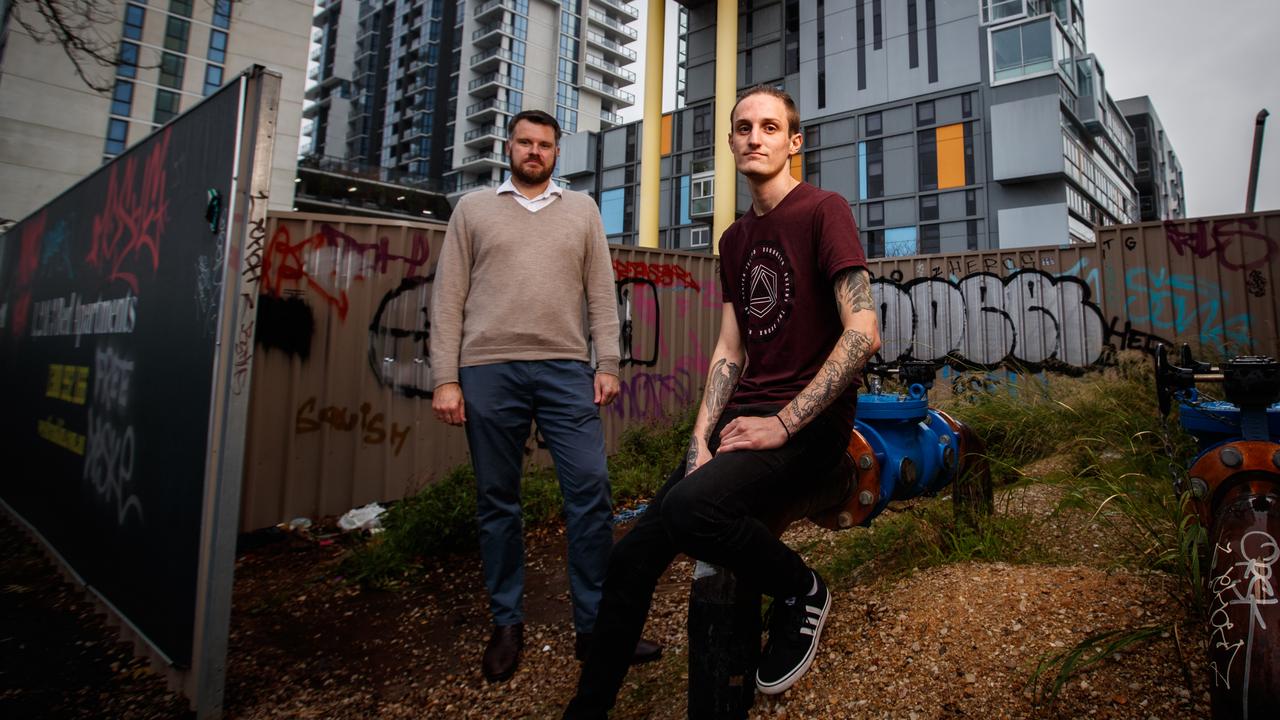SA Weekend 10 Year Special: How South Australia embraced a smarter, healthier city
There is no evolution as dramatic in South Australia over the past decade as Adelaide’s BioMed city — the largest health and life sciences cluster in the southern hemisphere. It was a transformation necessitated by need as much as inspiration.
SA Weekend
Don't miss out on the headlines from SA Weekend. Followed categories will be added to My News.
- SA Weekend: South Australia’s best stories
- SA Weekend: A decade of news in South Australia, and abroad
- SA Weekend: Adelaide was the city hungry for change
Nowhere is a decade of transformation more obvious than the stunning multi-billion dollar Health and Biomedical Precinct which has risen from the railyards along North Tce to Port Rd.
In 2008, Mitsubishi had closed, followed by Holden in 2017, ending car manufacturing in this nation and creating huge angst over what could replace this core industry which had provided so many jobs over the years.
Defence was one option, particularly shipbuilding.
From upgrading the Collins Class submarines to the Air Warfare Destroyer project and now the Attack Class Future Submarines program and Hunter Class frigates, defence projects have created thousands of good jobs in the past decade.
However, they always seemed to come with concerns about a jobs “Valley of Death” in between landing the next big project. Plus it was always bankrolled by politically-sensitive federal funding.
Enter health and biomedical research.

In 2007, as Mitsubishi was on the skids, the South Australian Government commissioned the Review of Health and Medical Research in South Australia, conducted by Professor John Shine and Alan Young.
It recommended the State Government establish a new health and medical research institute, and a fund to finance it.
The SA Health and Medical Research Institute (SAHMRI) was incorporated in December 2009 and opened in November 2013.
The Federal Government provided $200 million to help build the Institute’s iconic “cheesegrater” headquarters — a powerful symbol of change that seemed to capture the public imagination.
SAHMRI now has about 600 researchers and is conducting world class research aimed at generating wealth as well as good health, providing career paths for bright young graduates.

This was just the start of an extraordinary transformation at the highly visible city gateway precinct, now known as Adelaide BioMed City — the largest health and life sciences cluster in the southern hemisphere.
The $2.4 billion, 800-bed Royal Adelaide Hospital followed.
Work on the site commenced in 2011 and, after repeated delays and plenty of controversy, the RAH opened in September 2017.
Two university buildings followed, adding to the engine room of research.
The University of Adelaide Health and Medical Sciences Building supports medicine, nursing and dentistry students as well as around 600 health sciences researchers — the $246 million, 14-storey building opened in 2017.
Immediately next to it, the $247 million University of South Australia Cancer Research Institute opened in 2018, adding research, development and teaching capacity.
It is home to UniSA’s research-rich School of Pharmacy and Medical Sciences, and the globally recognised Centre for Cancer Biology.
There is much more to come in this hub of healthcare and research, including a new Women’s and Children’s Hospital adjacent to the RAH expected to open in 2025.
Then there is SAHMRI 2, to be built adjacent the original SAHMRI with construction to start this year.
The $300 million building will house some 400 researchers and will be the site of Australia’s first proton therapy unit, delivering cancer-destroying protons to the tumour site of otherwise inoperable cancers, without affecting healthy tissues.
It will treat 800 patients per year.

SAHMRI executive director Professor Steve Wesselingh says the precinct had changed the way people interstate perceive Adelaide.
“The Victorians come over and go ‘wow, what happened here, there is suddenly a whole lot of new buildings in a row working together’,” he says.
“The precinct has national relevance, people interstate are looking at it and saying South Australia is really changing the game.
“It is also saying to people in Year 12 and university there is something here for you to aspire to. Medical graduates probably know they will get a job somewhere but it is the science graduates, and there are lots of opportunities for the maths and engineering graduates here.”
As the gleaming new Adelaide BioMed City takes shape as a very visible sign of our changing economy and opportunity for new careers, a neat link ties it to the next chapter of South Australia’s transformation.
The new Australian Space Agency will be housed on the old RAH site, now known as Lot 14 — a potent emblem of a state which is not afraid to grasp the future.



